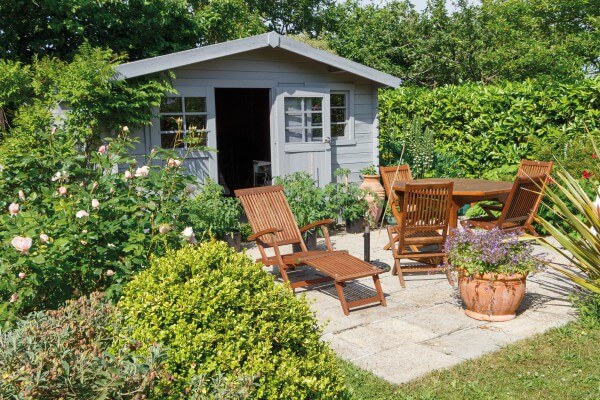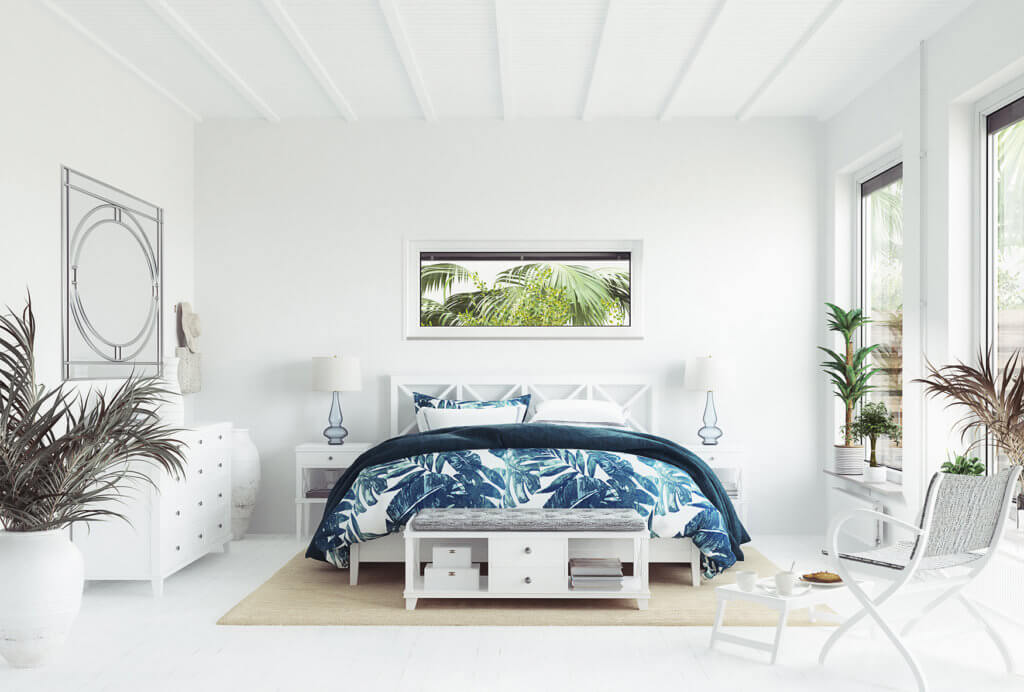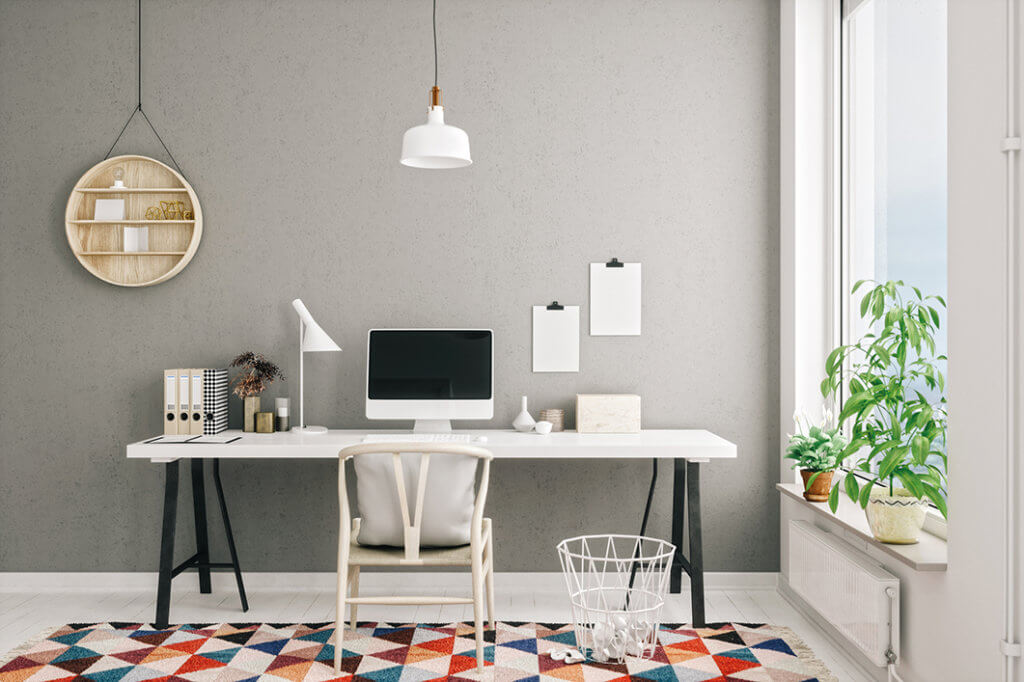A Room of One’s Own

Did lockdown make you realise your house isn’t big enough? A garden building could be the answer. We show you how to create a ‘man cave’, a games or playroom, an office, gym or guest room
As so many of us have spent a lot of the spring and summer at home, you may have finally realised that you need more space!
You could move or extend, but these options require a pretty hefty cash injection – despite the stamp duty holiday. So, adding a garden room is a good compromise. It isn’t as pricey as an extension, nor does it involve much upheaval. In fact, specially designed garden rooms or offices can start from just under £10,000.
If you don’t want to stretch the budget that far, you could consider using a large shed or summerhouse, especially if you already have one that could be converted.
With the addition of a sofa bed, some teamaking facilities – and even a spare toilet if funds and planning allow, your garden room could make an extra space for guests to stay – though do check our ‘planning points’ on the further down the page.
Make a man cave
If you didn’t get a lot of say in the decoration of the main house, take the opportunity to make your man cave as masculine as you want. A classic American ‘den’ features plaids and stripes in deep greens, dark reds and browns.
A man cave should reflect your interests. It may be where you keep your guitar and music collection, it could be a creative area for a hobby, where you can hide away your materials and tools from the kids, or perhaps you’d rather have your own bar, complete with bar stools, optics and beer pumps.
Games or playroom
Extra space for the children to play can be a lifesaver, especially if you only have one reception room.
A playroom allows space for bigger toys such as toy kitchens and workbenches. You can also set up activities in the playroom, rather than having them take over the kitchen or living room.
If your home has a neutral palette, take the opportunity to be bright and bold in the playroom. Get creative and paint a fun mural, or order some fun giant decals of favourite cartoon characters for the walls.
Set up a painting/creation station with lots of drawers for craft materials, and make sure there is space in front of the playroom for water and messy play.
Office
Taking your office out of the house and into the garden has so many benefits. You can work away from everyone else’s noise and it allows you to make noise away from everyone else – perfect if you like to get up early or work into the wee hours. It also has the benefit of allowing you to ‘close the door’ on work at the end of the day.
Make sure you have a decent Wi-Fi signal – if you can’t get decent internet, you’ll be back at the kitchen table in no time! A Wi-Fi extender is an easy option but its reach will be limited. A powerline network uses the electrical power cable to link between the house and garden room. If you are having electricity laid to your garden room, get an ethernet cable laid at the same time for a more reliable and secure connection.
Decorate your garden office in colours that inspire you – yellow is supposed to be stimulating, green energising, and soft peaches and pinks are said to boost creativity and focus.
Gym
Release your exercise bike from its duty as clothes hanger and pop it into the garden room.
A garden room can give you room to lay out an exercise mat, and if you enjoy exercise videos and streamed classes, make sure you have a TV and an internet connection in the room.
The best bit about a home gym is that you can choose your equipment – if you just do cardio work, you can include a bike, a rowing machine and plenty of space to do aerobics, boxercise or whatever your favourite exercise class is.
Remember to include a decent fan too, for when you get a sweat on!
Planning points
Paul Smith, director at Milton Keynes-based Apex Planning Consultants, explains that your garden room may be covered by permitted development, meaning you don’t need to apply for planning permission. However, he says: ‘the use of the outbuilding must be incidental to your home – so if it is being used as an extra bedroom, that is unlikely to be classed as incidental. Experience shows that the interpretation of what is ‘incidental’ can subtly vary depending on your local planning authority, so it might be prudent to seek its pre-planning advice. Alternatively, you can submit
an application for a Certificate of Lawful Proposed Use or Development, which would confirm that the building work is lawful – useful if you ever sell up.’ Find out more at www.apexplanning.co.uk.
Better by design
Emma Holbrook from Berkhamsted’s Soden Style offers design tips:
 Keep it simple, less is more both inside and outside and makes the space feel bigger
Keep it simple, less is more both inside and outside and makes the space feel bigger- Create a Pinterest board of your likes and get inspired by a theme
- Think about crafty storage to keep the space decluttered and welcoming
- Remember adequate electrical sockets and lighting plus heating and plumbing
- Invest in great comfy seating that can be turned into an extra sleeping space
- Get as much natural light as you can, then add task/atmosphere lighting
- Ensure your ‘walls talk to you’, so any art you love, photography, treasures from your travels, loud wallpaper…
Bring Happiness and Calm Using Feng Shui

Feng Shui Specialist Denise O’Dwyer offers five tips for a happier home
 Now that we’re spending extra time at home, having a calm and happy environment has never been more important. Τhe ancient art and science of Feng Shui can help you create an everyday living space that supports you and all μembers of the family. Using Feng Shui generates more peace and harmony, while encouraging productivity and helping you be more creative. Just a few Feng Shui tweaks can produce effective changes.
Now that we’re spending extra time at home, having a calm and happy environment has never been more important. Τhe ancient art and science of Feng Shui can help you create an everyday living space that supports you and all μembers of the family. Using Feng Shui generates more peace and harmony, while encouraging productivity and helping you be more creative. Just a few Feng Shui tweaks can produce effective changes.
Here are my top Feng Shui Tips for a calmer and happier home.
- Remove all clutter from around the front door. The quality of Qi (pronounced chi), or energy, that flows in through the entrance sets the tone for the rest of the house. If your front door, either inside and out, is blocked by shoes, boots, coats, or worse still rubbish, the Qi will be messy and disturbed. Clearing the entrance and hallway way will encourage calm and free flowing Qi. This creates more harmonious Qi that can then flow around your house.
- Are you or your family members sitting or sleeping under a pointed lightshade or a light fitting with sharp edges? This creates agitated Qi where people don’t feel settled, or can even become argumentative. Change to smoother, rounded shapes and enjoy a less stressful atmosphere.
- Working from home? Move your desk so that you have a solid wall behind you. This creates good Feng Shui support so that you can be more focused and productive, and less tired at the end of the day. If you sit in line with a door, either move to another place or make sure you close the door when you work. Sitting in line with an open door puts you in the path of fast-moving Qi, which depletes your personal energy. This also applies to children studying at home.
- Bedroom Feng Shui is important because that’s where we spend around a third of our lives. Make sure your bedroom door is closed when you sleep. This slows down the Qi and creates a restorative and healing environment for sleeping. Never sleep in line with an open door, and always keep any ensuite door closed to stop the Qi draining away. If the quality of your sleep is not as good as you would like it to be, remove the TV or other electronic devices from the bedroom. Cover the TV with a cloth or scarf when you sleep if you must have a TV in the bedroom.
- Finally, take a look at your garden. If there are any broken items or stagnant water, clear them away. Garden Feng Shui also has an effect on your life. So put on your Feng Shui glasses and if anything looks or feels negative remove it to make sure your Feng Shui is as harmonious as possible.
Give Feng Shui a try. You could be surprised by the results.
Denise O’Dwyer, Feng Shui Specialist
www.FengShuiElement.co.uk. 07905 9099037
Working from Home – The New ‘Normal’

Ergonomics expert Laura Clark offers tips on how to set up a home office for comfort and health
 A lot of us have been faced with the new challenge of working from home and not everyone is well kitted out for this. Some people are lucky enough to have some kind of designated office area or building, but some are having to make do with the sofa or dining table. From an ergonomic viewpoint, this is far from ideal.
A lot of us have been faced with the new challenge of working from home and not everyone is well kitted out for this. Some people are lucky enough to have some kind of designated office area or building, but some are having to make do with the sofa or dining table. From an ergonomic viewpoint, this is far from ideal.
Because working at home may continue for some time, it is imperative to ensure that the home set-up is good, or as good as it can be. Over time, incorrect set ups can lead to areas of discomfort developing and worsening, if not addressed. Follow these simple tips for a home working environment that is comfortable and offers the correct support.
Breaks
Working in the comfort of your own home often means you get up less frequently than at the office. There is no one to go and speak to, and communication is done via Zoom, phone or email. Plus you are generally more relaxed. The body is designed to move and, even with a good set-up, it can start to go wrong if regular and consistent breaks aren’t taken. Lunchtime needs to be away from the working area.
Top tip: Leave your work area a minimum of once an hour, even for a few minutes. This gives the eyes a rest from the xcreen, keeps the muscles active and blood flow stimulated.
Laptop or PC use
Laptops aren’t very ergonomic inventions. You need to make sure the screen is at the right height so your head and neck are looking straight at it, not downwards, which can cause headaches and upper back issues. A laptop stand, or even some thick books can be used to raise it. A separate keyboard and mouse should be used because the built-in options cause a lot of wrist, elbow and shoulder issues such as RSI. Have the keyboard and mouse within easy reach
and a little gap in front of the keyboard to rest your wrists when typing.
Top tip: Use the laptop essentially as a PC with screen at the correct height, and separate keyboard and mouse. The same rule for screen height applies to a desktop computer.
Chair
If you are lucky enough to have an office chair, avoid perching and leaning forwards, and sit nice and upright with your back fully against the backrest. This provides optimal support. Armrests should be positioned just under your
arms when they are at a 90-degree angle. This relieves the strain on the shoulders.
Top tip: Avoid using the sofa if possible and if you really have to use a dining chair, try to use a cushion in the lumbar area, and make sure you get up regularly.
Laura is a self-employed workstation assessor. Normally she travels to workplaces to carry out workstation assessments for employees who are experiencing discomfort or who need more specialist attention but at the moment she is offering a ‘Workstation overview’ service for companies that want to make sure their staff are well set up at home. All that is needed is a photo of each end user at their home set-up.
laura@lauraclarkergonomics.co.uk, www.lauraclarkergonomics.co.uk
